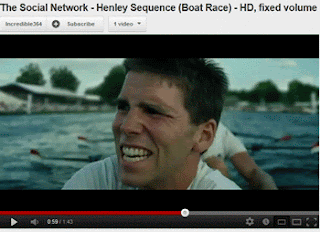The next scene is again from
the movie ‘The Social Network’. This scene is the Harvard ad board scene where
mark has to apologize for his hacking into Harvard network that lead's to the
systems crashing.It starts with the camera tilting up but static, camera first shows the feet of the three subjects and tilts up to show the rest of the bodies which are seated. The camera angle becomes a adult angle view with a medium
close up shot.
Jump cut occurs through out the scene in the form of shot reverse shot. Also the scene consists of over the shoulder shots.
This is a long shot with substantial amount of head space. Also it allows for other subjects and space for props as well.
The scene where mark stand up the camera tilts up with him showing an overhead shot of mark that is a medium close shot. Although since the camera point of view is of an over head shot of mark the rest of the frame is filled by a wide shot.
This is an example of a wide
close up shot and an adult angle view. The camera is static.
These shots are examples of a
wider close shot and an over the shoulder shot.
This entire scene is a shot
reverse shot with various cut away and cut back shots .It follows the 180 degree
rule as well, throughout this scene.from The point of view of the camera the over the shoulder shot allows for one subjects wide close up shot while the rest of the frame is filled by a mid shot.












 .
.


